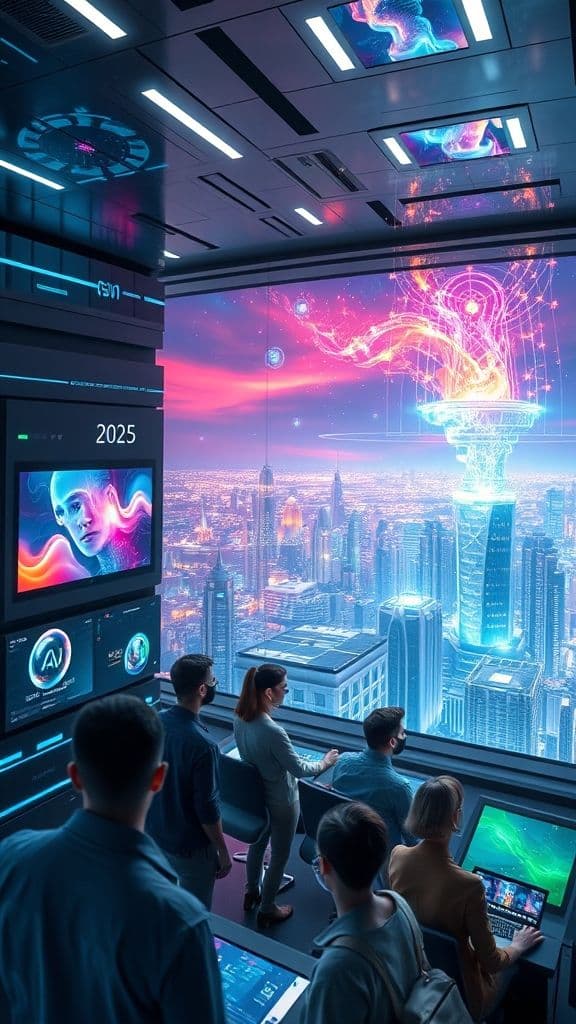The Future of AI Image Generation: Where Are We Headed in 2025?
The Future of AI Image Generation: Where Are We Headed in 2025?

The Future of AI Image Generation: Where Are We Headed in 2025?
The landscape of digital creation is undergoing a revolutionary shift, largely driven by the rapid advancement of Artificial Intelligence (AI). Among the most fascinating developments is AI image generation, a technology that transforms text descriptions into stunning visuals. As we approach 2025, the capabilities of these tools are not just expanding; they are reshaping how we conceptualize art, design, and visual communication. This blog post delves into the current state of AI image generation and explores the potential trajectory of this transformative technology over the coming years.
The Current State of AI Image Generation
The technology behind AI image generation, primarily based on diffusion models and large language models, has matured significantly since its early experimental stages. Platforms like DALL·E, Midjourney, Stable Diffusion, and many others have democratized access to high-quality image creation. Users can now generate complex, realistic, and stylistically diverse images from simple text prompts, often requiring minimal technical expertise.
Key features of current AI image generators include:
- High Resolution Output: Modern models can produce images with remarkable detail and clarity, suitable for various applications.
- Style Versatility: From photorealistic renders to specific artistic styles (e.g., Van Gogh, Cyberpunk), the range of outputs is vast.
- Control Mechanisms: Tools for inpainting (editing specific parts of an image), outpainting (expanding image boundaries), and refining details are increasingly common.
- Integration: Many platforms offer APIs, allowing integration into other software and workflows.
Emerging Trends and Technological Advancements
Looking towards 2025, several trends are poised to define the next phase of AI image generation:
- Enhanced Interactivity and Control: Future models will likely offer more intuitive and granular control. Users might interact with the generation process in real-time, adjusting lighting, perspective, composition, or even specific elements within the image as it's being created, perhaps using more complex multi-modal inputs (text, sketches, reference images).
- Video Generation: While still in its relative infancy compared to static image generation, AI video generation is rapidly advancing. By 2025, we can expect more sophisticated, longer, and higher-quality videos generated from text prompts or image sequences, opening new possibilities for content creation, marketing, and entertainment.
- 3D and Multi-Modal Outputs: The technology is expanding beyond 2D images. AI models are beginning to generate 3D assets, textures, and even basic 3D models from text descriptions. This integration of 2D, 3D, and potentially audio into a single generative workflow is a significant frontier.
- Improved Understanding and Context: AI models will become significantly better at understanding complex, nuanced prompts and contextual relationships within a scene. This means more accurate interpretations of abstract concepts, multi-subject interactions, and logical consistency within generated images.
- Personalization and Customization: Tools will likely become more adaptable to individual user preferences and specific needs. Users might train custom models on their own datasets or fine-tune existing models for specific styles, subjects, or brand guidelines.
- Real-time Generation: The speed of image generation is constantly improving. Real-time or near real-time generation could become standard, enabling applications like live AI-powered illustration or dynamic background generation in virtual environments.
Implications and Opportunities
The evolution of AI image generation presents a wealth of opportunities across various sectors:
- Creative Industries: Artists, designers, architects, and filmmakers will have powerful new tools to brainstorm, prototype, and create. AI can augment human creativity, handling repetitive tasks or generating initial concepts, allowing humans to focus on higher-level creative direction.
- Marketing and Advertising: Generating custom visuals for campaigns, personalized content, and rapidly iterating on creative concepts will become more efficient and cost-effective.
- Education: AI can generate visual aids, historical recreations, scientific illustrations, and conceptual diagrams, making learning more engaging and accessible.
- E-commerce: Creating product mockups, customizing visuals, and generating lifestyle images for products can be streamlined.
- Gaming and Virtual Worlds: Procedurally generating assets, environments, characters, and textures can accelerate game development and create more dynamic virtual worlds.
Challenges and Ethical Considerations
Despite the immense potential, the rise of AI image generation brings significant challenges that need careful navigation by 2025:
- Copyright and Ownership: The legal landscape surrounding the ownership of AI-generated content remains complex and contested. Questions about the rights of artists whose work may have been used in training datasets are paramount.
- Misinformation and Deepfakes: The ability to create highly realistic fake images and videos poses serious risks for misinformation, fraud, and manipulation. Robust detection methods and ethical guidelines are crucial.
- Bias and Representation: AI models can perpetuate biases present in their training data, leading to unfair or stereotypical representations. Ensuring diverse and inclusive outputs is an ongoing challenge.
- Impact on Artists: The technology raises concerns about the livelihood of artists and designers. It's crucial to find ways for AI to complement, rather than replace, human creativity, ensuring fair compensation and recognition for original artists.
Conclusion
As we stand on the cusp of 2025, AI image generation is no longer a futuristic concept—it's a rapidly evolving reality. The technology promises to unlock unprecedented creative potential, streamline workflows, and democratize visual creation. However, realizing this potential responsibly requires addressing the ethical, legal, and societal challenges head-on. The future of AI image generation will be shaped not just by technological breakthroughs, but by our collective efforts to ensure it is used ethically, inclusively, and beneficially for creators and society as a whole. The journey is just beginning, and the destination promises to be a fascinating blend of human imagination and artificial intelligence.